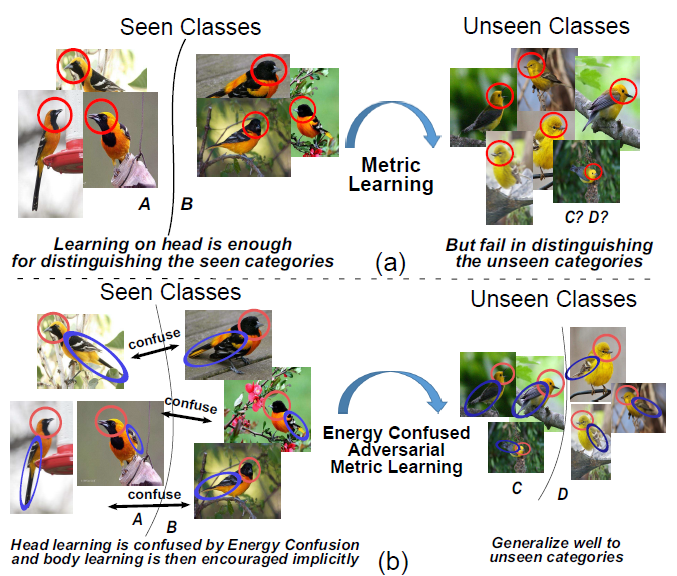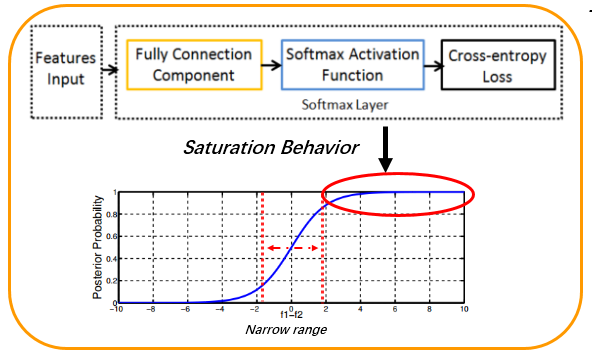
Binghui Chen, Weihong Deng
Association for the Advancement of Artificial Intelligence (AAAI), 2019
In this paper, we propose the Energy Confused Adversarial Metric Learning (ECAML) framework, a generally applicable methods to various conventional metric learning approaches, for ZSRC tasks by explicitly intensifying the generalization ability within the learned embedding with the help of our Energy Confusion term. Extensive experiments on the popular ZSRC benchmarks(CUB, CARS, Stanford Online Products and In-Shop) demonstrate the significance and necessity of our idea of learning metric with good generalization by energy confusion.

